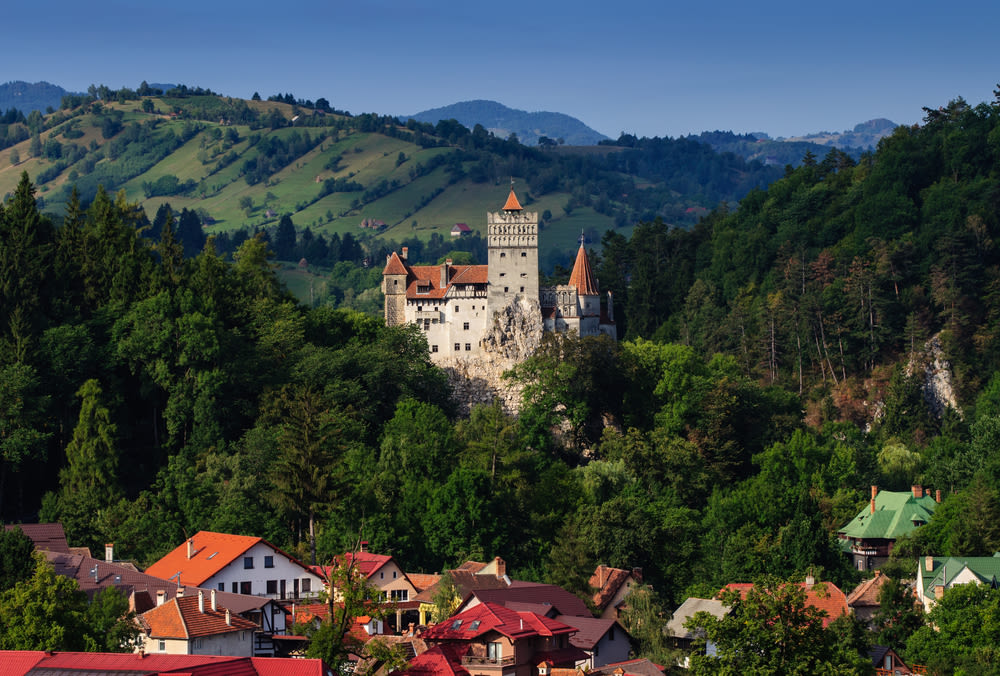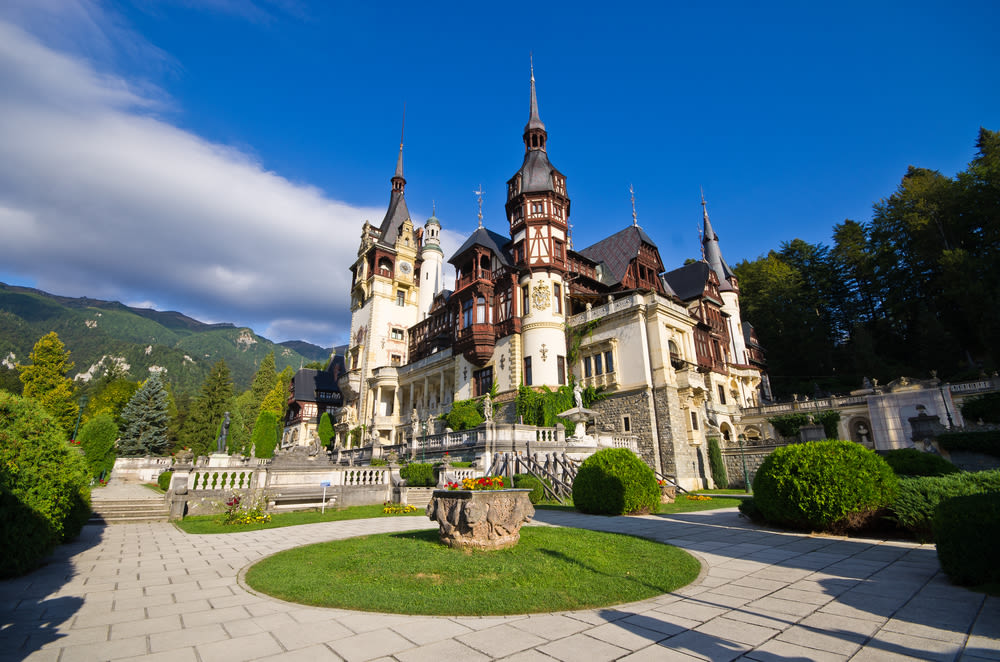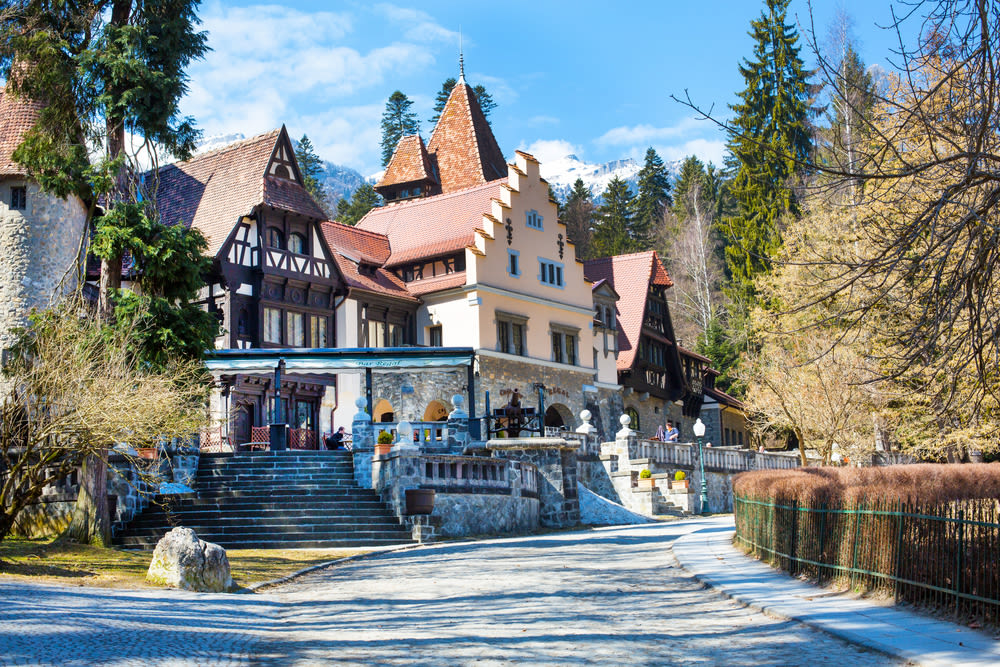Following in Dracula's Footsteps

Bran Castle and beautiful Transylvania: not remotely creepy.
Image: Shutterstock
Romania is possibly Europe's most misunderstood country. What do you really know about it? Could you point it out on a map? After a quick survey of a few dozen friends, I discovered that most of them could tell me little to nothing about this amazing country that didn't pertain to vampires. Hollywood has forever etched the Dracula fable into our minds with scores of movies about the infamous Romanian bloodsucker, which is unfortunate, as Romania is so much more than that.
That having been said, these legends are one of the primary reasons some travelers find themselves in the Transylvania area. Who doesn't want to catch a glimpse of the undead at Dracula's castle? Transylvania means "the land across the forest," and it's a beautiful—and indeed, very heavily forested—area to visit should you find yourself in Romania. The main tourist road heads north from Bucharest into the mountains, full of scenic stops and quaint villages. Of course, the big draw is, yes, you guessed it! Dracula's castle.
Bran Castle is the number one tourist destination in Romania as well as a minor disappointment if you're looking for vampire stereotypes. It's scary-looking enough from the outside as it rises on a jagged cliff, but its interior is, well, less than menacing. I was there in the late fall, so the leafless trees and overcast sky in the foreground made for some great pictures of the giant edifice. But once inside, the freshly painted white walls and simple furniture completely canceled out any passing thoughts of a monster encounter. The inside is nothing special, except for an occasional dark hallway, though the outside of the building makes up for it with its fairy tale turrets and twisting roof.
The biggest surprise, in fact, is that there are hardly any vampire-related souvenirs as you walk through the stalls on the way up to the castle. Why? The main reason is Dracula as we have portrayed him in film and other media is quite a different person than his real life counterpart. Bram Stoker wrote the novel Dracula in the late 1800s and it became a monster classic. He liked the name Dracula, which translates to "dragon" and is often associated with Vlad Teppes—one of Romania's most infamous denizens, also known as Vlad the Impaler.

Peleș Castle, also never home to Dracula.
Image: Shutterstock
Vlad, it turns out, had a bit of a temper. He was raised as a prisoner of the Ottomans and it is believed his time spent captivity transformed him into a cruel man with a penchant for torture. Maybe he was a little jealous that his brother was known as Radu the Handsome and had to work off some steam. Regardless, Vlad may never have sucked any blood from any necks, but he was known to impale his enemies and leave their bodies out in the fields to rot, to warn future enemies about their possible fate.
Regardless, the castle in Bran is often associated with Dracula for two reasons: First, it's the only fortress that matches the description of the Count in Bram Stoker's book and the real life Vlad Teppes spent two months imprisoned there. That's a bit of a stretch on both counts (pardon the pun) because Stoker never actually visited Romania. Secondly, Vlad never really technically lived there. In spite of all of this, the outside of the castle does exude a certain creepiness that still brings travelers from all over the world.
Just north of Brasov is Sighiosoara, where Vlad was actually born. This beautiful medieval village was built by Transylvania Saxons and was declared a UNESCO world heritage site in 1999. It's a beautiful yet eerie town that looks like it came straight out of a horror film, with funky rooftops and cobblestone streets. The cemeteries, conveniently enough, are a must-see.

The village of Sinaia is a popular tourist destination for its nearby castle, monastery and geologic formations.
Between Sighisoara and Bucharest is the charming resort town Sinaia, in the region of Romania called Prahova County. The Bucegi Mountains—part of the southern Carpathian Mountains—that frame the area are breathtaking, though one doesn't have to be content just to stare up at them. A cable car leaves from the tiny mountain town Buşteni to the top of the mountain. Looking down from the top of the mountain is stunningly beautiful, while hiking is equally enjoyable. Nearby Babele is another popular tourist destination, a national park with giant mushroom-looking formations and strange shaped rocks. The Romanian Sphinx is the most famous natural sculpture in Babele, which actually looks like an eroded Sphinx if you stand in the right place.
Peleș Castle is located at the base of the Bucegi Mountains near Sinaia (which was itself named for the biblical Mount Sinai) and is built in a Neo-Renaissance style. In a beautiful setting peeking out of a forest, the gardens, murals and statues are amazing. The palace is only about 100 years old but was carefully constructed to make use of older European architecture styles, while not directly imitating any other. It is vaguely reminiscent of Mad King Ludwig's famous Schloss Neuschwanstein in Bavaria and takes its name from the nearby Peleș monastery, another popular tourist site.
Romania is one of Europe's most exciting, yet overlooked tourist destinations. It has amazing castles, fantastic hikes, medieval towns and ancient churches that rival anything in the west. Looking for a new travel treasure? Romania might be exactly what you're looking for.




